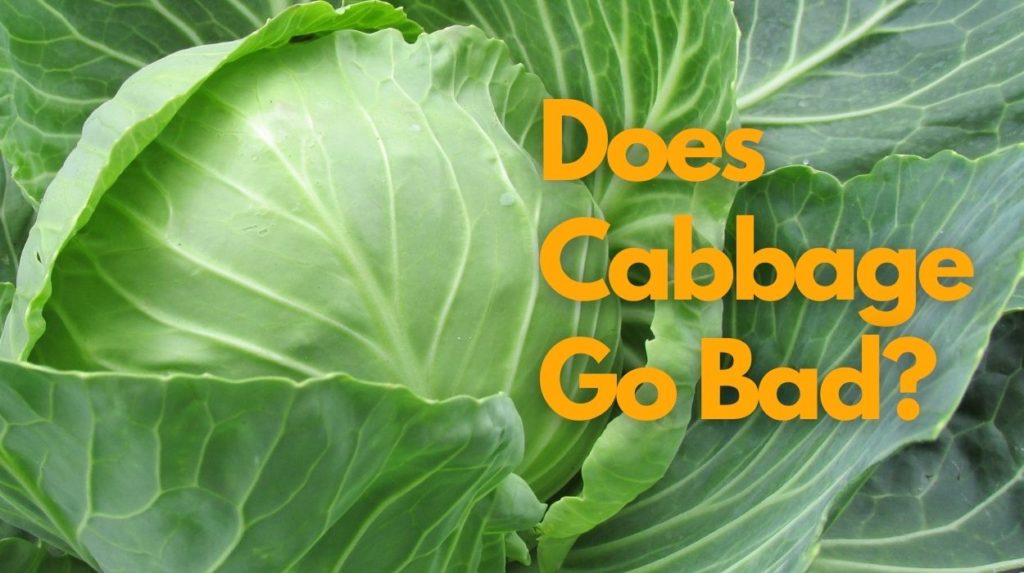
Be it coleslaw salads, Chinese preparations, or cuisines worldwide, cabbage is one versatile vegetable, present everywhere! It’s easy to avail, cheap, tasty, and can easily blend with almost any preparation.
Due to its robust nutritional profile, it is often incorporated into several dishes, which is why it is stocked in bulk in the kitchen pantry. However, cabbage can also get spoilt easily if not stored correctly.
Being a moisture-rich leafy vegetable, its leaves may start wilting and losing color. Luckily, you can make the best use of your cabbage if it is stored appropriately. Wonder how? Read on to find out!!
How Long Does Cabbage Last?
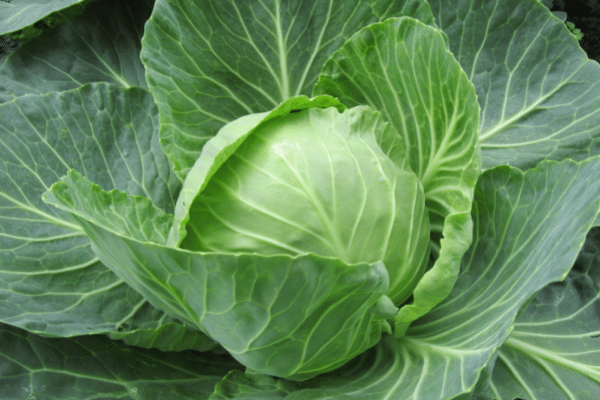
Cabbage is a lot like lettuce. The thing about fresh vegetables is that they do not come with an expiry date or ‘best before’ date. Therefore, you need to consider the day when it was purchased and use it accordingly.
However, cabbage can last quite a long as compared to lettuce.
The exact shelf life of cabbage can depend upon various factors like its size, how it has been stored, if it is chopped or whole cabbage, etc.
In general whole cabbage can last a lot longer than shredded/cut versions. This is because the leaves in the cut version are more exposed and can shrink, which causes them to spoil quickly.
Whole cabbage:
- Can last for 1-2 days on the counter
- 4-5 weeks in the refrigerator
- 9-12 months in the freezer after blanching
Cut cabbage:
- It lasts for 2-3 hours on the counter
- 7-10 days in the refrigerator
- 9-12 months in the freezer after blanching
Cabbages are also available in supermarkets these days, wrapped in plastic. When they are uncut, the cabbage can last for a few weeks in low temperatures. However, once cut, you need to use it within 2-3 days.
If you have cooked the cabbage, you need to refrigerate the cooked dish after it cools down so the cabbage does not get spoilt. Keep the dish covered and use it within 3-5 days.
If you use cabbage for a salad, it will last for at least 3-5 days. Check that the cabbage does not become watery; else, the salad will lose its taste.
Irrespective that the coleslaw salad is purchased from a store or made at home, the shelf life is more or less the same. Better the storage, the greater the shelf life.
How to Tell If Cabbage Has Gone Bad?
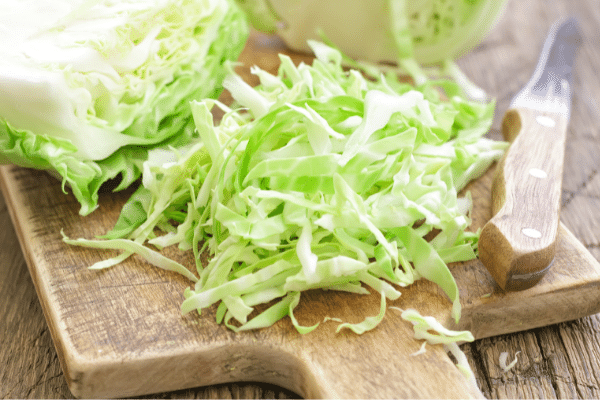
Like other fresh vegetables and food items, even cabbage has a minimal and versatile shelf life. Here are a few ways to determine if your cabbage is intact or has gone bad:
Appearance
The first way to judge any fresh vegetable like cabbage is its appearance. Usually, cabbage leaves are light green to white when fresh. However, the leaves lose their original shape and become shriveled once the cabbage starts wearing out.
The color of the cabbage leaves also changes from bright green to yellow, grey, or brown/black.
Cabbage can also be attacked by insects. These insects can cause holes in the leaves. If you see multiple holes on the leaves, the cabbage is not fresh and unfit for use.
However, when cabbage is cut into halves and stored, you may notice the exposed areas of the cabbage turning brown/black.
At this time, you can cut the rotten portion and check the insides. If the leaves have not changed color, you can still use the rest of the cabbage without worrying that it may cause harm.
Touch
If you touch spoilt cabbage leaves, they feel slimy and slippery. You will feel a soft textured layer that develops on top of the leaves.
Cabbage leaves have a very unruly and slightly rough texture. If it feels unusual, then the cabbage is inappropriate for use.
Sniff Test
If the cabbage is spoilt, you will get a rotten stale smell. If it gets spoilt in the fridge, the smell can spread to other food preparations as well. This is when you need to discard it, be it in the case of a prepared cabbage vegetable or whole cabbage.
Molds
Cabbage is a high moisture vegetable and retains water. Therefore, wet and damp surfaces can easily develop molds. Mold growth is harmful, and therefore, you must discard the cabbage if you see such growth on its leaves.
You may have often noticed some white spots on the surface of cabbage leaves. This means the cabbage has lost its greens and may have developed fungal growth.
Prolonged Storage
If you are picking a coleslaw salad from a supermarket or local vendor, check the date when it was packed. If it is in the store or on the shelf for a very long time, it can easily get spoilt. Therefore, it is best not to use the product even if it appears fine.
What happens if you eat spoilt cabbage?
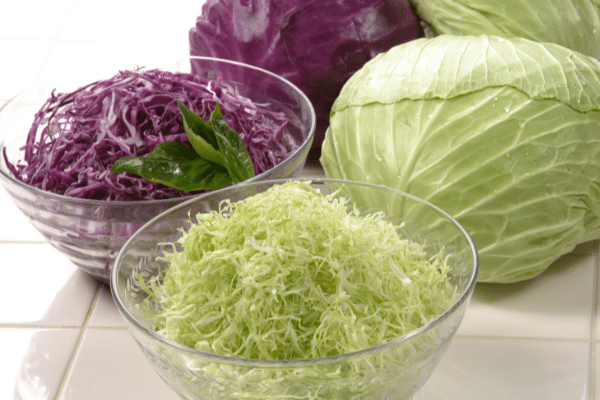
Cabbage is considered one of the top foods when it comes to the list of items causing diarrhea or food poisoning. This is because cabbage leaves can quickly develop molds due to their high moisture content.
Secondly, they are also susceptible to growing food-borne pathogens like E.coli, Salmonella Typhi, etc. If consumed in excess, these pathogens can cause vomiting, diarrhea, and food poisoning.
According to a study conducted by Healthline between 1973-2021, 85% of food poisoning outbreaks in the US have been caused due to green leafy vegetables. The list of veggies includes cabbage, kale, lettuce, spinach, etc.
Therefore, it is always necessary to wash the vegetables before using them. Avoid consuming pre-prepared cabbage salads that have been stored at room temperature.
Check the sources of where you purchase cabbage from. If they continuously spray water from dirty sources, the cabbage is bound to be contaminated by food-borne pathogens. This, again, can cause intestinal issues and food poisoning.
Sometimes, stores use preservatives to increase the shelf life of cabbage. Unfortunately, the chemicals in the preservatives can cause the leaves to get withered, making the cabbage stale. These chemicals are not suitable for health either.
Stores or farmers may also use pesticides to avoid the attack of insects and pests on cabbage leaves.
Spraying pesticides is a prevalent practice in the case of leafy vegetables. However, this can again be a problem because solid chemicals in pesticides can lead to food poisoning or other life-threatening diseases.
Excess cabbage consumption is also known to cause gas and bloating. It is a water-retaining leafy vegetable that can make you feel bloated.
People who especially have a sensitive bowel and weak digestive system should not consume spoilt cabbage or excess cabbage in general.
What Is The Best Way To Store Cabbage?
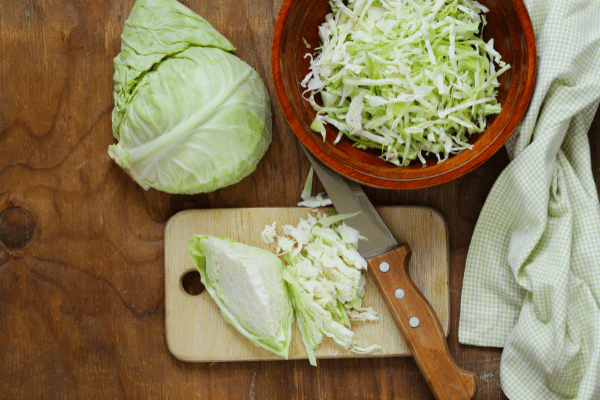
Cabbage can be stored both at room temperature and in the refrigerator. However, if you want to increase its shelf life, storing it in the refrigerator is ideal.
If planning to store it at room temperature, make sure to keep it as it is, uncut and safe. Do not drop the cabbage as it leads to cell damage within. This can degrade the Vitamin C content and make the cabbage less nutritious and more susceptible to getting spoilt.
You can wrap it inside a newspaper or keep it in airtight packaging, like a ziplock bag. Just make sure that the bag has all the air and moisture removed.
Keep it whole without the head cut, and avoid places where the head is prone to get bumped and move. Do not cut it into half or shred the cabbage if you want it to last longer.
Can you refrigerate or freeze cabbage?

Freezing or refrigerating is one of the best ways to store cabbage. If stored in the refrigerator, it can stay well in the fridge drawer without any packaging or sealing for 2-3 days.
Just make sure not to put any water on it. Even if it is cut into half and stored in the drawer, the outer leaves may wilt or turn black, but the insides remain crisp.
If you really want to store cabbage leaves for longer, it is also possible to freeze them. That, of course, is after blanching the cabbage leaves to extend its shelf life. You can store it without blanching as well, but that renders the cabbage less nutritious, and the leaves start wilting soon.
Here is what you can do to store cabbage leaves in the freezer:
- Step 1: Start by taking a whole cabbage and decide how to store it – whether shredded or as wedges or cut into half.
- Step 2: Now comes the critical step – Blanching. Cut the cabbage into wedges and place it in a pot of boiled water. The high temperature briefly cooks the cabbage. If it is cut into pieces, it might take 1 ½ minutes. Cabbage wedges take a good 3 minutes.
- Step 3: Next, prepare an ice bath and plunge the hot cabbage pieces into the ice bath to stop the cooking process. After a minute or so, strain the water and transfer the cabbage pieces onto a paper sheet.
- Step 4: Drain off the excess moisture that remains after the blanching process.
- Step 5: Now, along with the paper sheets, place the cabbage wedges or pieces into the refrigerator for several hours until frozen.
- Step 6: Transfer it into a moisture-free and air-dry zip lock bag once frozen. Make sure the zip lock bag is freezer safe.
- Step 7: Label the bag and toss it into the freezer. Using this technique, you can store the cabbage for a good 16-18 months.
How to defrost/thaw the cabbage?
The thawing depends upon how you want to use the cabbage. In case you want to use it for soups or coleslaw salads, you can directly use the frozen cabbage pieces without waiting for them to thaw.
If you want to cook the cabbage, you can wait for the cabbage to thaw for a few hours. Just keep it in the vegetable basket of your fridge so that it can attain normal temperature before cooking.
Alternatives for Cabbage if it Goes Bad
If the cabbage sitting in your kitchen pantry in your fridge has gone bad, you can try the following substitutes:
- Kale
- Napa cabbage
- Celery
- Kohlrabi
- Brussels sprouts
FAQs
How do you keep cabbage crisp?
Blanch the cabbage leaves in salt water if you want to keep them crispy. Just toss the shredded cabbage in salt water and let it stay for about 30 minutes. Salt leeches out the excess moisture in cabbage leaves, making sure that the leaves stay crispy.
Can cabbage be left out overnight?
Raw, uncooked, and uncut cabbage can be left overnight if stored and appropriately wrapped. However, if the cabbage is cut, it will only stay for a few hours and cannot be left overnight.
On the other hand, cooked cabbage will also get spoilt easily if kept out for long as it may develop molds and bacterial growth. Therefore, you cannot store it overnight at room temperature unless it’s whole cabbage.
Can you freeze cabbage after you cook it?
Yes! After you have cooked the cabbage, allow it to settle at room temperature. Then, use a zip lock freezer bag and make sure to remove all the air and moisture from it. Next, transfer the cooked contents into the bag and close it tightly.
If you are storing it in a container, make sure that the lid fits well and is an airtight box. You can wrap the container in foil for double safety. Label and freeze the cabbage for 3-5 months easily using this technique.
Is cabbage bad when it’s yellow?
No! If stored for a prolonged time in the fridge or at room temperature, cabbage leaves may start turning yellow. They are still safe to use unless they smell funky or look weird.
The bottom line
Cabbage is a versatile leafy vegetable that blends with almost any raw or cooked preparations. However, storing cabbage leaves can be quite a task. Since they tend to retain high moisture, they are also susceptible to getting spoilt easily.
Luckily, we have summed the best ways of storing cabbage both at room temperature and in the refrigerator. So now, you can make the best use of cabbage without worrying about it getting spoilt.
Ideally, we would suggest storing cabbage in the refrigerator or in the freezer to increase its shelf life. But, ultimately, the longevity of the vegetable depends on how well you store it.
Let us know if the article helped you through the comments section below.
Until then, make sure to Eat Those Greens!!



